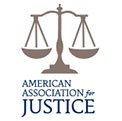Talcum Powder Cancer Timeline
Talcum Powder and Ovarian Cancer Over Time
The histories of talcum powder and ovarian cancer have become intertwined in many people’s lives for more than 75 years.
- 1809 — First documented case of an ovarian tumor, which was a 22-pound tumor removed surgically from a 45-year-old patient on Christmas Day. The patient recovered and lived for 33 more years. (source)
- 1890 or 1892 — Johnson & Johnson’s Baby Powder, made with a soft mineral called “talc,” is invented by J&J scientific director Fred B. Kilmer (source, source)
- 1930s — Talcum powder first linked to human harm — post-operative granulomatous peritonitis (inflammation of the membrane that lines the abdominal wall and covers the abdominal organs) caused by talcum powder on surgical gloves. (source)
- 1971 — Particles of talc are found “deeply embedded within” ovarian and cervical tumors. “The close association of talc to the asbestos group of minerals is of interest,” researchers say. Asbestos is a known carcinogen. (source)
- 1970s — Manufacturers separate asbestos from talc in talcum powder manufacturing. Some claim talcum powder is free of asbestos (source), others say asbestos particles remain in talc (source).
- 1982 — Harvard researcher finds women who used talcum powder nearly double their risk for ovarian cancer, and those who used it regularly on their genitals and sanitary pads were at more than three times the relative risk. (source)
- 1980s — Johnson & Johnson markets talcum powder product Shower to Shower Body Powder with catchy TV ad jingle “Just a sprinkle a day / Helps keep odor away.” (source)
- 1992 — Increased risk of ovarian cancer found in women who used sanitary napkins to apply talcum powder to their genitals. (source)
- 1992 — Johnson & Johnson memo suggests investigating “major opportunities” to increase sales of talcum powder products to African American and Hispanic women. (source)
- 1993 — U.S. National Toxicology Program determines that talc is a carcinogen. (source)
- 1994 — Cancer Prevention Coalition writes to Johnson & Johnson CEO Ralph Larson and asks J&J to withdraw talc products from the market and use cornstarch powders as alternative, or at a minimum, publish warnings on labels about ovarian cancer risk its talc-based powders pose. J&J does neither. (source)
- 1996 — Condom industry stops dusting condoms with talc due to the health concerns regarding ovarian cancer. (source)
- 1997 — A 50 percent elevation in the risk for ovarian cancer is associated with the use of one or more of four methods of genital talcum powder application: storing diaphragms in powder, powdering genital areas after bathing, powdering sanitary napkins, and using genital deodorant sprays (which may contain aerosolized powder). Ovarian cancer risk was most strongly elevated among those who powdered genital areas after bathing. (source)
- 1998 — A manufacturer’s memo outlines a strategy to “stop the rumor” of the link between ovarian cancer and baby powder. The memo was written at the request of talcum powder product manufacturer Luzenac America. (source)
- 2009-2010 — The Food and Drug Administration (FDA) cannot prove talc-containing cosmetic products are likely to be free of asbestos contamination. Testing was outsourced to a capable laboratory but, of nine cosmetic talc suppliers identified, only four provided samples requested for the FDA study. (source)
- 2010 — A 30 to 60 percent increase in the risk for ovarian cancer among users of body powder containing talc is identified in a World Health Organization (WHO) review of eight previous studies. (source)
- 2013 — Eight case-control studies suggest a 20 to 30 percent increase in risk of developing epithelial ovarian cancer associated with genital talcum powder use. (source)
- 2009-2013 — The first talcum powder lawsuit against Johnson & Johnson is filed by Deane Berg, a 49-year-old physician’s assistant from Sioux Falls, South Dakota, who developed ovarian cancer in 2006. Johnson & Johnson offers Berg a $1.3 million confidential settlement. She declines and, in 2013, is granted a unanimous verdict against J&J, but no compensation.
- 2014 — Two class action lawsuits are filed against Johnson & Johnson in St. Louis following Deane Berg’s verdict. (source, source)
- 2015 — Children’s crayons and toy crime lab kits are found to contain asbestos thought to have come from contaminated talc and are recalled. (source)
- 2016 — Researchers find 40 percent increased risk of cancer in African American women who used body powder regularly on their genitals. Those with non-genital use of talcum powder had an increased risk of more than 30 percent. (source)
- 2016 — Propensity to develop ovarian cancer increases by 33 percent with genital application of talcum powder (directly on genital/rectal area, on sanitary napkins, tampons, or underwear), study finds. Risk increases with additional years of powder use. Most women studied reported using Johnson & Johnson’s Baby Powder or Shower to Shower. (source)
- February 2016 — A Missouri state jury orders Johnson & Johnson to pay $72 million to the family of a woman whose death from ovarian cancer was linked to her use of the company’s talc-based Baby Powder and Shower to Shower for several decades. The verdict includes $10 million in actual damages and $62 million in punitive damages. It is the first damages award by a jury in a talcum powder-ovarian cancer lawsuit. (source)
- May 2016 — A St. Louis jury orders Johnson & Johnson to pay $55 million to a 62-year-old South Dakota woman. Jurors agreed that the company’s products, such as Johnson’s Baby Powder and Shower to Shower, contributed to the development of her ovarian cancer. (source)
- September 2016 — At least 1,800 lawsuits have been filed against Johnson & Johnson in St. Louis over J&J’s talcum powder products. (source)
- October 2016 — A St. Louis jury awards more than $70 million to a California woman who claimed in a lawsuit that Johnson & Johnson’s Baby Powder caused her ovarian cancer. (source)
- November 2016 — Johnson & Johnson’s bid to have talcum powder lawsuits moved out of St. Louis fails. J&J plans appeal to Missouri Court of Appeals. (source)

 Talcum Powder and Ovarian Cancer Over Time
Talcum Powder and Ovarian Cancer Over Time











